#Mercenaries
Text
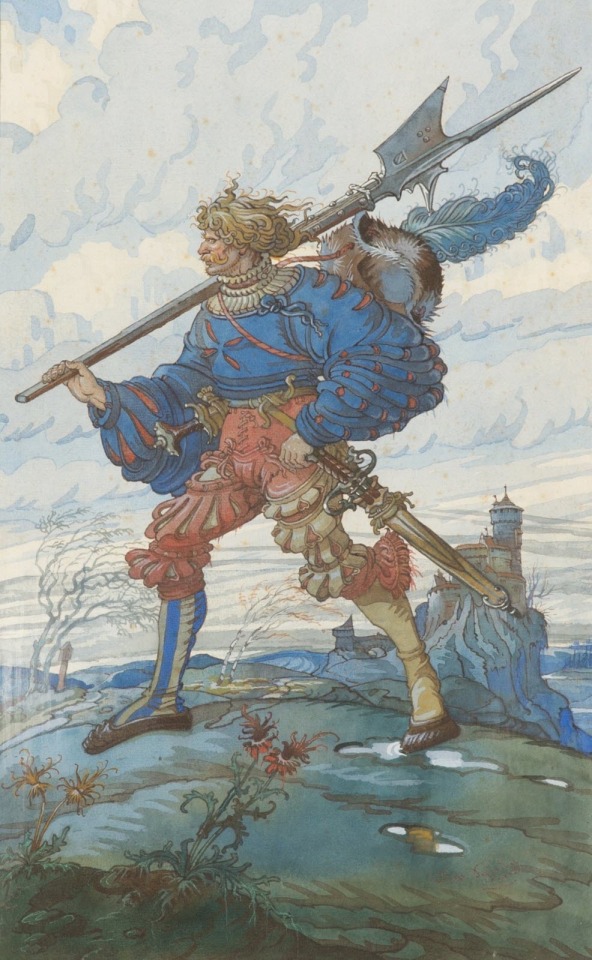
Landsknecht by Léo Schnug
#léo schnug#landsknecht#lansquenet#art#history#alsace#strasbourg#halberd#europe#european#lansquenets#landsknechts#renaissance#mercenary#mercenaries#soldier#soldiers#german#germanic#pike and shot#pikemen#middle ages
346 notes
·
View notes
Text
Be Gay… Do Crimes


More Landoscar spy au 💅💅
#f1#mclaren#papaya army#lando norris#f1 fanart#op81#pookie#he is the loml#landoscar spy au#the landoscar brain rot is all consuming#landoscar fanart#landoscar#oscar piastri fanart#ln4 fanart#hitmen#mercenaries#spies#assassin au
166 notes
·
View notes
Text





Costas Mandylor in Mercenaries (short, 2019)
#costas mandylor#more gifs to come#my gifs#moviegifs#filmgifs#filmedit#dilfgifs#costasmandyloredit#cinemapix#mercenaries
106 notes
·
View notes
Note
Please tell me more about neighbourhood PMCs in renaissance Italy
It would be my pleasure! (My research into this owes a lot to the excellent Power and Imagination: City-States in Renaissance Italy by Lauro Martines.)

The first thing to note that, unlike the condottieri, these were not private military companies. Rather, the neighborhood military companies (in the sense of a military unit, rather than a profit-making entity) were self-defense organizations formed as part of a centuries-long political struggle for control over the urban commune between the signorile (the urban chivalry)/nobilita (the urban nobility) and the populo (the guilded middle class, who claimed to speak on behalf of "the people").
This conflict followed much the same logic that had given rise to the medieval commune in the first place. Legally, the communes had started as mutual defense pacts between the signorile and the cives (the free citizens of the city) against the rural feudal nobility, which had given these groups the military and political muscle to push out the marquises and viscounts and barons and claim exclusive authority over the tax system, the judicial system, and the military.
So it made sense that, once they had vanquished their enemies and established the commune as the sovereign, both sides would use the same tactic in their struggle over which of them would rule the commune that ruled the city. The signorile and nobilita formed themselves into consorteria or "tower societies," by which ancient families allied with one another (complete with dynastic marriage alliances!) to build and garrison the towers with the knights, squires, men-at-arms, and bravi of their households. These phallic castle substitutes were incredibly formidable within the context of urban warfare, as relatively small numbers of men with crossbows could rain down hell on besiegers from the upper windows and bridges between towers, even as the poor bastards on the ground tried to force the heavy doors down below.
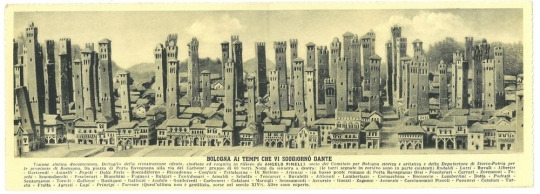
To combat noble domination of communal government, achieve direct representation on the political councils, establish equity of taxation and regulate interest rates, and enforce legal equality between nobility and citizenry, the populo formed themselves into guilds to build alliances between merchants and artisans in the same industries. However, these amateur soldiers struggled to fight on even footing with fully-trained and well-equipped professional soldiers, and the guild militias were frequently defeated.
To solve their military dilemma, the populo engaged in political coalition-building with the oldest units of the urban commune: the neighborhoods. When the cities of medieval Italy were originally founded, they had been rather decentralized transplantations of the rural villages, where before people had any conception of a city-wide collective their primary allegiance was to their neighborhood. As can still be seen in the Palio di Siena to this day, these contrade built a strong identity based on local street gangs, the parish church, their traditional heraldry, and their traditional rivalries with the stronzi in the next contrade over. And whether they were maggiori, minori, or unguilded laborers, everyone in the city was a member of their contrade.
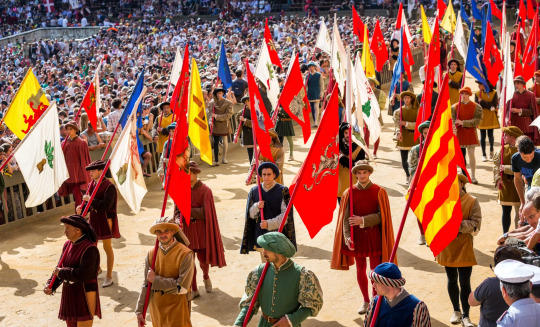
As Martines describes, the populo both recruited from (and borrowed the traditions of) the contrade to form their armed neighborhood companies into a force that would have the manpower, the discipline, and the morale to take on the consorteria:
"Every company had its distinctive banner and every house in the city was administratively under the sign of a company. A dragon, a whip, a serpent, a bull, a bounding horse, a lion, a ladder: these, in different colors and on contrasting fields, were some of the leitmotifs of the twenty different banners. They were emblazoned on individual shields and helmets. Rigorous regulations required guildsmen to keep their arms near at hand, above all in troubled times. The call to arms for the twenty companies was the ringing of a special bell, posted near the main public square. A standard-bearer, flanked by four lieutenants, was in command of each company."
To knit these companies organized by neighborhood into a single cohesive force, the lawyers' guilds within the populo created a state within a state, complete with written constitutions, guild charters, legal codes, legislative and executive councils. Under these constitutions, the populo's councils would elect a capitano del popolo, a professional soldier from outside the city who would serve as a politically-neutral commander, with a direct chain of command over the gonfaloniere and lieutenants of the neighborhood companies, to lead the populo against their noble would-be overlords.
And in commune after commune, the neighborhood companies made war against the consorteria, taking the towers one by one and turning them into fortresses of the populo. The victorious guilds turned their newly-won military might into political hegemony over the commune, stripping the nobilita of their power and privilege and forcing them either into submission or exile. Then they directed their veteran neighborhood companies outward to seize control of the rural hinterland from the feudal aristocracy, until the city had become city-state.
(Ironically, in the process, the populo gave birth to the condottieri, as the nobility who had lost their landed wealth and political power took their one remaining asset - their military training and equipment - and became professional mercenaries. But that's a story for another time...)
#history#historical analysis#renaissance history#renaissance fantasy#medieval cities#city-states#urban communes#guilds#city charters#guild charters#mercenaries#nobility#artisans#burgher rights#merchants
134 notes
·
View notes
Text

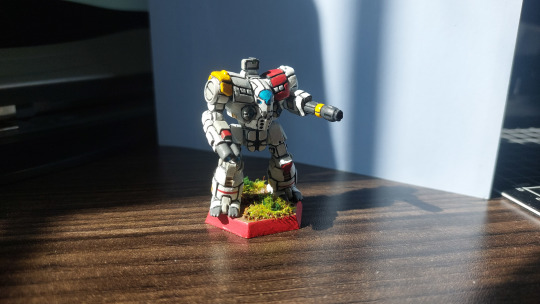


Guillotine in my custom color scheme (now with basing!)
Presumably a GLT-3N or a GLT-8D variant on account of the lasers.
52 notes
·
View notes
Text
New mercenary unlocked! Never anger the dollmaker

#yes that is a heckin bazooka#shooting dolls#slay them donna#someone give me capcom's gmail#im gon' send em this#resident evil 8#resident evil village#resident evil#donna beneviento#mercenaries#resident evil donna
1K notes
·
View notes
Text
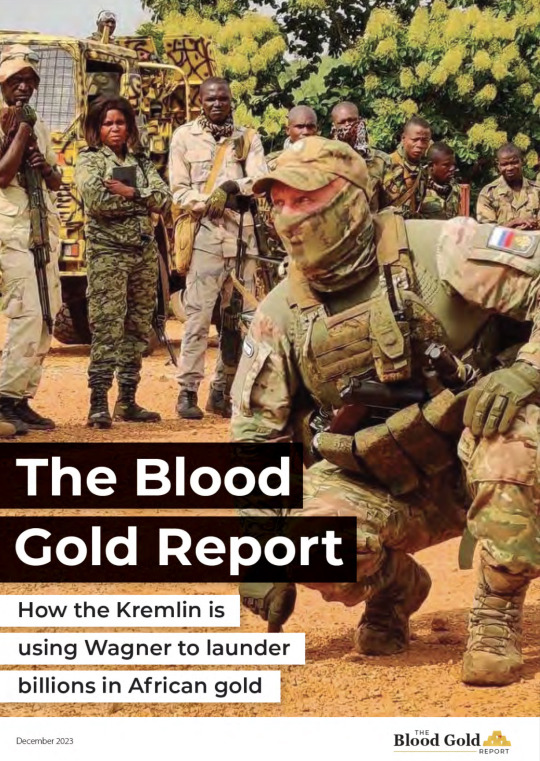
Executive summary
Since launching its brutal war of aggression against Ukraine in February 2022, the Russian Federation has been locked into a long and costly conflict. Russia has been diplomatically marginalized, subjected to sanctions, and shunned by most of the Western world. Many multinational companies have been forced by international pressure to shutter or sell their Russian operations, and profiting from cooperation with the Russian state is no longer considered acceptable. Russia has found itself in dire need of new allies and resources.
In this environment, the Kremlin-financed Private Military Company Wagner, or Wagner Group, has served as an increasingly important source of revenue for the Russian state. Founded in 2014 to support pro-Russian forces in Donbas, since then Wagner Group has evolved into a complex international network of private military contractors, disinformation campaign infrastruc-ture, and corporate front companies. It has deployed fighters, propaganda and disinformation campaigns, and financing as a proxy for the Russian state in numerous conflicts, from Syria and Libya to Mali, Central African Republic, and beyond
Wagner has most often been described as an independent mercenary group. This status has provided Russia with a thin veil of deniability, particularly in relation to the numerous plausible accusations of murder, rape, torture, and war crimes raised against Wagner fighters. But in reality, Wagner has always operated with the political and material backing of the Russian Federation to advance Russian state interests.
In Africa, Wagner has been deployed in a number of countries across the continent since 2017. In each country it enters, Wagner deploys military trainers, mercenary fighters, and propaganda experts to support anti-democratic regimes, drive instability, and commit human rights abuses. The mercenary group's ostensible provision of "security services" creates a framework for lucrative business contracts for the extraction of natural resources including diamonds, oil, timber, and especially gold.
This report focuses on the Kremlin's 'blood gold': Gold extracted from African countries and laundered into international markets that provides billions in revenue to the Russian state, thereby directly and indirectly financing Russia's war on Ukraine and global hybrid warfare infrastructure.

The Blood Gold Report's analysis suggests that Wagner and Russia have earned more than US$2.5 billion from blood gold since the full-scale invasion of Ukraine in February 2022. The report focuses on the case studies of Wagner's blood gold operations in the Central African Republic, Sudan, and Mali. In each of these coun-tries, Russia profits from the blood gold trade in different ways:
In CAR, the mercenary group has been granted exclusive extractive rights for the Ndassima mine, the country's largest gold mine, in return for propping up President Touadera's authoritarian regime. Wagner's Ndassima operations are understood to produce US$290 million of gold annually, while local miners have been pushed aside or murdered by the mercenary group.
In Sudan, through control of a major refinery, Wagner has become the dominant buyer of unprocessed Sudanese gold as well as a major smuggler of processed gold. Russian military transporter flights laden with gold have been identified by Sudanese customs officials. While tracking Sudan's unreported gold market is near impossible, estimates suggest that almost Us$2 billion in gold is smuggled out of the country unreported every year, with 'the Russian Company' in prime position to take advantage.
In Mali, Wagner is paid a monthly retainer - estimated at US $10.8 million per month - to prop up a brutal military junta Meanwhile the junta is in turn dependent on a small number of Western mining companies for the revenue it needs to pay Wagner. Mining companies contributed more than 50% of all tax revenues to the Malian state for 2022. Barrick Gold Corporation, a Canadian listed company and Mali's single biggest tax contributor, paid US$206 million in the first half of 2023 alone.
The junta is increasing its financial demands on gold mining companies. Meanwhile, the four largest gold mining companies (weighted by tax contribution) continue to plan further investments in the country, despite the well-documented abuses of the military junta and growing influence of the Wagner Group.
Wagner's blood gold operations in CAR and Sudan have been subject to sanctions, and the Kremlin-backed mercenaries have developed increasingly complex smuggling routes and corporate subterfuge tactics to move blood gold out of these countries and convert this gold into cash.
In contrast, the Malian blood gold system enables Wagner to remain one degree removed from gold production. Instead, legitimate multinational mining companies convert gold into cash for the Malian military junta without triggering international sanctions.
To secure its position in a target country's political and natural resource extraction landscape, Wagner's African playbook consists of a four-pronged attack on the host country's civic institutions and civilian population - suppressing political opposition, spreading disinformation, silencing free media and terrorising civilians.
The ultimate objective of Wagner's playbook is to increase its clients' dependence on Wagner forces to stay in power, thereby securing a long-term revenue stream for the Kremlin and fostering authoritarianism and instability throughout the region as part of Russia's wider geopolitical strategy to distract and bog down the democratic West.
Since the death of Wagner's leader Yevgeny Prigozhin, the mercenary group has formally come under the control of the Russian State. Yet the Kremlin's focus on Africa, and its blood gold operations, show no signs of changing.
(continue reading)
#politics#ukraine#russia#africa#wagner group#syria#libya#russian imperialism#russian colonialism#blood gold#money laundering#mercenaries#barrick gold#barrick gold corporation#russia is a terrorist state
34 notes
·
View notes
Text




(Original signs)




#Alan Becker#AvA#AvM#Mercenaries#AvA 6#Agent#Ballista#Basalt#Exit#Red#Purple#TDL#Dark#Reconfigured Dark AU#safety signs#FlowerBarrel-Art
24 notes
·
View notes
Text
SO, I'm impatient, so I made the quiz today.
Which of the Mercenaries From Animator VS Animation Season 2 Are You?
Please note, there is a little silly character that is not one of the mercenaries or Victim I added for funsies!
70 notes
·
View notes
Photo
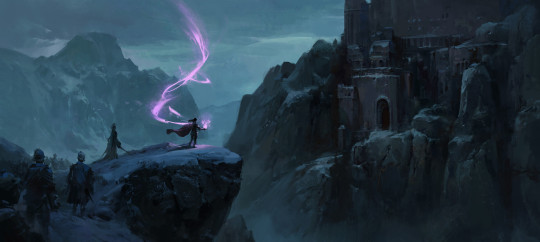
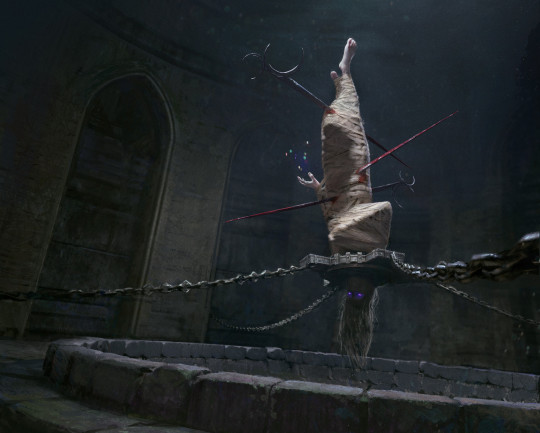
Villain: Dastigaan, The Maddest Mage of our Age
There’s a secret they won’t tell you about descending into the pit of madness. It’s that once you realize there’s no bottom your fall begins to feel a lot like flying.
It’s a well known fact that casters frequently meddle with powers beyond their understanding, at risk of not only inflicting trauma to their surroundings and their own mind, but onto reality itself. Dastigaan was the sort of mage folk all to reductively refer to as “mad”, the sort that confused the trauma he caused with an indicator of his growing power, and sought to cause more as a means of pushing his limits. He dealt with dark powers and lost himself in the forbidden reaches of the multiverse, returning home as a catacylsmic storm of arcane power that just so happened to still wear a mortal’s skin. Before he could unleash his terrible power he was caught and imprisoned by the great mages of the realm, an imprisonment that’s lasted for decades and will very soon come to an end, possibly with the party’s unwitting aid.
Adventure Hooks:
Dastigaan’s escape begins in the most innocuous way: The heroes come into conflict with a belligerent magic shop owner, who over promises on the capabilities or reliability of particular items and then throws the party out (using telekinisis) when they come back to complain. As they’re picking themselves up off the ground, a helpful tiefling by the tame of Tristham approaches to help dust them off and offer commiserations. the shopowner was an old business rival of his who elbowed him out of the magic trade and has been running roughshod over all the other enchantment vendors in town. Mutual cursing of the shopowners’s name turns into an offer of drinks, which turns into a completely innocent discussion of just how one might get into the shop and swipe a few choice items along with the owner’s collection of crafting diagrams. After the party returns victorious and after the heat dies down, Tristham will mention that he just so happens to have another job in the works, and that the party have just so happened to prove themselves more than qualified for an interview.
The architect of the big heist is one Ildra of Volennwal, a retired military officer and decorated war mage in her 60s who became dissolusioned with the kingdom’s goverannce after sustaining heavy personal injury including the loss of one of her arms to secure a victory that the diplomats traded away for trade concessions before she had even recovered. IIdra apparently has a plan to break a vault full of treasure held in reserve by the crown in the case of wartime, but is skeptical of the parties abilities to help pull it off despite her quartermaster Tristham’s appraisal. If the party want in, they’ll have to prove they can handle some danger... say by raiding a particularly notorious dungeon and bringing back a relic that will be useful in the caper
Drawn in by the promise of good pay and rich rewards by heisting an arcane vault, the party are half way into the execution of their plan when they discver that what they’re ACTUALLY doing is helping to break one of the most dangerous casters alive out of wizard jail. Do they abandon their plan an attempt to escape? Turn themselves over to the authorities? Go through with it and embrace their future as troubleshooters for a would be tyrant? They better make their decision soon, Ildra brought a small army of her old mercenaries buddies as a plan B of brute-forcing the jailbreak, and they won’t be too happy seeing their point-team turn tail and run.
Background: Far from the gibbering, nonsensical caricature that one could assume of most “mad” mages, Dastigaan is calm, cool, and in many ways perfectly reasonable. Backpacking through nightmare dimensions let him shrug off the destructive impulses of his youth and come to terms with what it really means to be a master of the arcane. The problem is where this reason will take him, as in order to avoid further pain, imprisonment, and attempts on his life, Dastigaan decided a few decades ago that each and every mage that acted against him or aided in his imprisonment must be made an example of. In order for these examples to be effective, they must be so direct and horrifying that they scar themselves onto history, a personal apocalypse delivered to each of the realm’s greatest casters to ensure the world learns from their mistake in opposing him.
This was exactly Ildra’s intent, having studied at the knee of one of those powerful mages and realizing far too late how his loyalty to the realm and distance and lofty position made him out of touch with the sacrifices of common people his grand stratagems necessitated. Knowing that she could never hold him, or the crown he served to account, Ildra remembered one of the old wizard’s forwarnings about the Maddest Mage of the Age and knew she had a weapon.
Further Adventures:
If your party don’t pick up on the original magic shop plot-tread (bastards) consider having them join up with the mercenary company that Ildra employs, or come into service of one of the mages Dastigaan is going to eventually target just before he escapes on his own.
The escape of the Maddest mage of the Age is going to make the great wizards and sorcerers of the realm shit their collective robes, having them stockpile arcane weapons, vanish completely as they flee to other planes, or drop all their responsibilities and disguise themselves as commoners while they wait for this all to blow over. While the panic and the chaos it brings begins to trickle down to the commons, the party end up adopting a skittish grey cat who seems intent on following them about for protection. This cat is infact Ildra’s mentor, having polymorphed himself into an easily overlooked form with a collar of nondetection.
While he possesses innumerable forbidden magics learned in his time beyond the stars, Dastigaan’s chosen method of avenging himself against his captors is to open the door to his good friend the outergod of paradox and let the lovecraftian horror horror go to work. Each of these violations results in the creation of a grisly monument, proportional in size and horror to how culpable Dastigaan believed that victim was in his imprisonment. Some are merely fist sized idols of clay and still living meat, others are grotesque instillation that eat up the lives and bodies of an entire city block.
#villain#dnd#dungeons and dragons#d&d#5e#horror#heist#theif#shopkeep#low level#mid level#Merchant#mercenaries#jail break#wizard#warlock#sorcerer#warfare
351 notes
·
View notes
Text
French Foreign Fighters Aiding Israeli Genocide In Gaza

It has been revealed that France has 4,185 citizens currently participating in the Israeli aggression on the Gaza Strip.
Source: Mint Press
#free gaza#gaza#gaza strip#gazaunderattack#save gaza#ceasefire#palestinians#genocide#free palestine#france#french#foreign figters#Mercenaries#palestine#gaza war#abolish israel#israel politics#hamas#benjamin netanyahu#al qassam brigades#islamic resistance#jerusalem#west bank#ethnic cleansing#free the west bank#al aqsa flood#al aqsa mosque#al aqsa storm#al quds#i stand with palestine
39 notes
·
View notes
Text

Landsknecht with Halberd by Lucas Cranach the Elder
#landsknecht#lansquenet#footsoldier#halberd#foot soldier#art#lucas cranach the elder#landsknechts#lansquenets#mercenaries#mercenary#foot soldiers#german#germany#europe#european#history#renaissance#warfare#war#footsoldiers#landsknechte#halberdman#soldier#soldiers
210 notes
·
View notes
Text


drooling
81 notes
·
View notes
Text




Costas Mandylor in Mercenaries (short, 2019)
#costas mandylor#my gifs#moviegifs#filmgifs#filmedit#dilfgifs#dailyflicks#cinemapix#costasmandyloredit#mercenaries
86 notes
·
View notes
Note
I understand that knights normally followed a fairly set career path: start as a page, get taken on as a squire, and then if they merit it and have resources, knighthood. How did it work for other classes of soldier? How would one go about becoming say, a man at arms, or a specialist like a long bowman or a crossbowman or a pikeman for example?
Ah, excellent question!

One preliminary thing, you do have to be mindful of the distinction between actual training and social organization. Let's take your "career path" for knights, for example - at its heart, the whole page/squire thing was essentially a two-stage apprenticeship, but there was both a mix of actual martial training (I'll get into the curriculum in a bit) and what we would think of as socialization into the noble class - things like music, dancing, literacy, manners, and so forth aren't really directly related to the job of an armored heavy cavalryman, after all.
Importantly, when it comes to the distinction between various ranks, we have to keep in mind the importance of both material resources and sociocultural status. As you note, the difference between a squire and a knight was really about whether the squire could afford the full complement of arms, armor, and a horse, and there were more than a few grown men who were squires their whole lives (this is the inspiration for characters like Squire Dalbridge) because they just didn't have the money to advance to knighthood.
At the same time, the difference between a knight and a man-at-arms came down to social class - in order to be a man-at-arms, you had to have the same training as a knight and own the same equipment (arms, armor, and horse), which is why a lot of the written sources simply call all such men men-at-arms whether they were knights or not - although some sources took more pains to distinguish between the milites gregarii (the plain man-at-arms) and the milites nobiles (which, as you probably have guessed, refers to actual knights).
The former tended to be from the gentry rather than the nobility, and as a result of their lower status, they were usually paid half the wage rate of knights despite doing the same work and taking on the significant risk of providing their own equipment. (The fact that they were cheaper also explains why the proportion of actual knights on the campaign rolls dropped rather rapidly between the 13th and 14th centuries - knights were more expensive, so hiring men-at-arms instead meant you could stretch the budget for heavy cavalry.)
The Knightly Curriculum
As I suggested above, the training for knights was essentially an apprentice system where the page and then the squire provided service to their master in exchange for education. When it comes to the actual content of this training, the curriculum was actually pretty ecletic:
As you might expect, training in arms was an important part of the program. However, this training included a lot more than just swordsmanship. While the sword was very culturally important, when it came to the actual military function of a heavy cavalryman, the lance was arguably of greater importance. Training also tended to include other sidearms - axes, maces, and the like. In later periods, as armor got a lot better and mounted frontal charges tended to be de-emphasized in favor of having men-at-arms fight as dismounted heavy infantry, the curriculum expanded to include new weapons like the poleaxe and other polearms that Gary Gygax was obsessed with.

Training in horsesmanship was also a core part of the curriculum. GRRM is not wrong when he says that "jousting was three-quarters horesemanship," and this is why pages and squires were not only taught formal equestrian lessons, but were also taught how to hawk and hunt as part of their training. Hawking and hunting were the past-times of the nobility in no small part because they involved riding horses very fast through difficult terrain while simultaneously handling either a dangerous animal or weaponry, and were thus were considered good training for future cavalrymen. As Hillary Mantel puts it, "la chasse...we usually say, we gentlemen, that the chase prepares us for war."
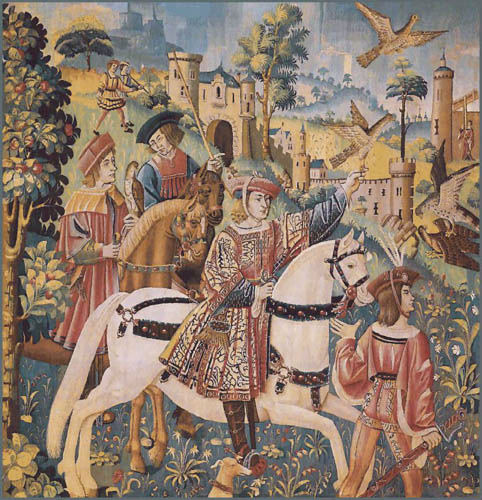
Training in armor tends to get downplayed or overlooked, but it was considered so important that a major portion of what pages and squires did was deal with armor - carrying it, maintaining it (scrubbing with abrasives to prevent rust, oiling the straps to keep the leather straps supple, polishing - it was really endless labor), repairing it, putting it on their master and taking it off, and so on and so forth - so that they would understand every step of the process and be able to fend for themselves later on if they didn't have attendants of their own. The famous French knight, Jean "Boucicaut" le Maingre, was held up as an example to pages and squires for constantly wearing full armor while undertaking exercise:
youtube
What About the Man-at-Arms?
As you may have noticed, I've been mostly talking about how knights trained rather than men-at-arms. So how did your gentry-born homme d'armes train? Essentially the same as a knight, but with less of the aristocratic bells and whistles of ritualized service and socialization to the nobility. So a son of the gentry would probably be training under the tutelage of their father or other male relative - and given that we're talking about a society in which the overwhelming majority of people did the same jobs as their parents, often being legally bound to do so, this was a very common phenomenon all the way from peasants upwards - or perhaps from a professional tutor who would most likely be a veteran in working retirement.

Towards the later Middle Ages, as literacy rates increased and book production expanded to match supply to demand, your more traditional systems of apprenticeship and one-on-one tutoring became supplemented with written manuals of arms. While this genre of military literature goes all the way back to classical antiquity - and indeed, Roman manuals like De re militari were very popular in the Middle Ages, as were translations of Byzantine manuals - these lavishly illustrated manuscripts were both practical teaching tools and status objects for the families who owned them.
Specialists: Longbowmen, Crossbowmen, and Pikemen
Ok, enough about the upper classes, what about the commoners who served as specialist infantry in Medieval and Renaissance armies?
Well, I've already written a bit about longbow training, but the gist of it is that what started out as a (Welsh) hunting tool was recognized by the English royal government as a vital aspect of military readiness, so laws were promulgated that required essentially all but the poorest to own a longbow and that "that every man in the same country, if he be able-bodied, shall, upon holidays, make use, in his games, of bows and arrows… and so learn and practise archery." This training started at a fairly early age and lasted at least a decade, because it involved both the acquisition of technique and the development of the body (not just the arms, but also crucially the back muscles, as the "special sauce" of the English longbowman was his ability to "lay my body in my bow" rather than relying solely on the arms) - such that archeologists can identify longbowmen from the over-development of the shoulder and arm bones.

What about crossbowmen? Well, as I've already written a bit about, one of the major advantages of the crossbow over the longbow is that you could train someone to be a crossbowman in as little as four months, compared to the decade at minimum for a longbowman, because most of what you were teaching them was accuracy in shooting (hence why the recruitment process often involved eye exams) and the procedures for loading and cocking the crossbow - which required a certain amount of physical strength to pull back the string to the nut that would hold it in place, or to work the winch or the lever or the gaffe or the windlass if you were using a heavier crossbow, but nothing like the physical conditioning required for a longbow.

One of the reasons why the term "Genoese" is so often associated with the crossbow is that the Republic of Genoa established a corps of crossbowmen to serve both in the army and as marines in the navy and these experienced soldiers in turn provided a ready supply of labor for mercenary companies. While the captains who recruited on behalf of the great companies might have to put in the up-front investment of equipment (the crossbow and its accessories, pavise shields, armor,and sidearms), they were able to essentially outsource the training costs to the Republic.
When it comes to training, pikemen were somewhere in the middle between the longbowman and the crossbowman. Because pikemen have to fight shoulder-to-shoulder with lots of other pikemen without stabbing one another accidentally or getting their polearms tangled up, coordinating movement and action was vitally important. Hence, pikemen learned a series of quite complicated drills to teach them how to move in formation in different directions, how to change formations from line to square and back, how to switch from pike to sidearm and back, how to work with missile infantry, and so forth.

As I've talked about before, a big part of the reason why Swiss pikemen were so feared on the battlefield is that, because they were very well-drilled and disciplined due to the policies of universal military service adopted by the Swiss cantons, they could execute these drills very quickly, which meant that the Swiss pikemen could turn on a dime from an impenetrable defensive pike square to a shockingly fast and aggressive deep column which beat the ever-loving shit out of the Burgundians, the Hapsburgs, the Italians, the French, and pretty much everyone - until the Swiss ran up against a nasty combination of the German Landsknecht and the Spanish tercio.
#history#military history#knights#men-at-arms#medieval warfare#mercenaries#longbow#crossbow#pike#medieval history#swiss pikemen
163 notes
·
View notes
Text

Star Wars - The new protagonist is caught by Grand Admiral Thrawn
#star wars#mitth'raw'nuruodo#thrawn#grand admiral thrawn#skywalker family#mitthrawnuruodo#boba fett#mercenaries#ultimate anna
16 notes
·
View notes